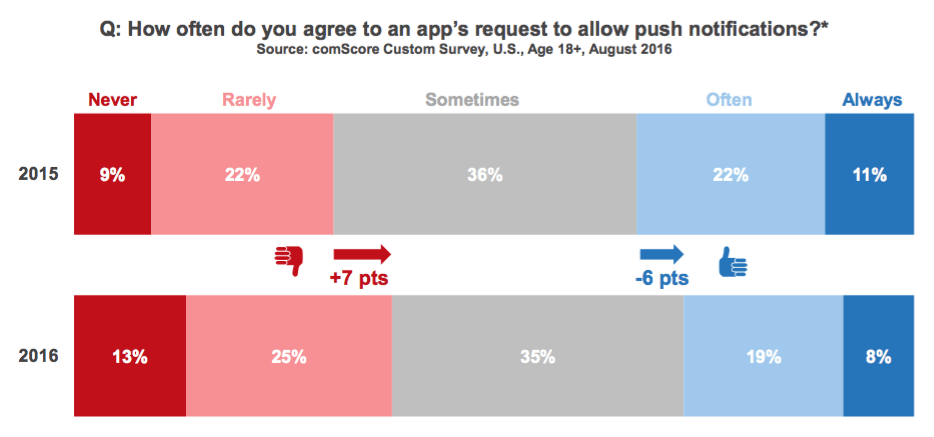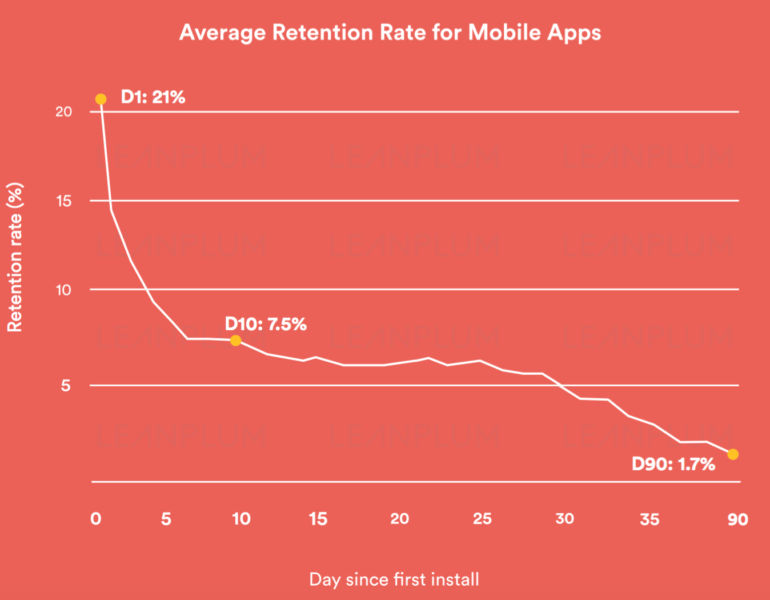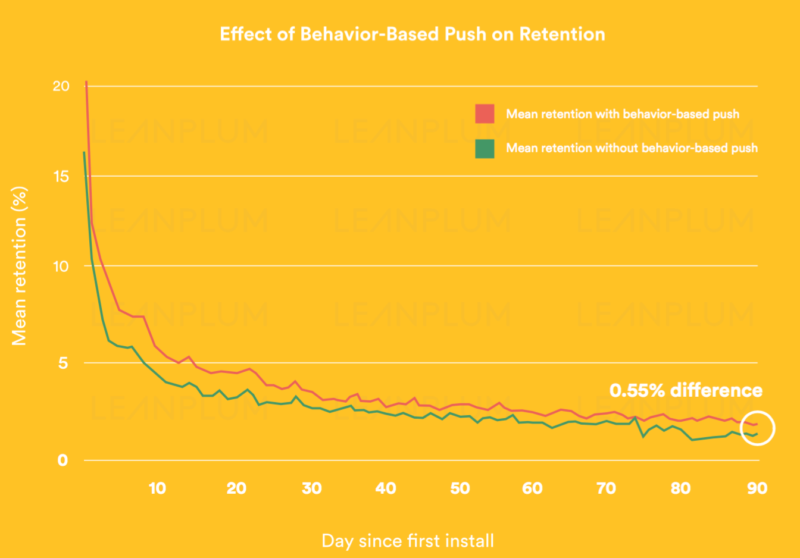Can the app-retention crisis be addressed with personalized notifications?
Leanplum says behaviorally and time-optimized notifications improve retention.

A new comScore mobile report reflects that almost 60 percent of digital media time is now spent in apps (tablet, smartphone). That makes brands’ app/retention strategies more important than ever.
Push notifications are widely regarded as a tool to boost app retention. However, comScore data show that consumers often decline notifications. Just under 40 percent users say they “never” or “rarely” allow notifications. Only 27 percent “often” or “always” allow notifications.

Leanplum argues in a new report that app retention has become critical to revenue generation and that more personalized notifications can dramatically improve retention. The overwhelming majority of apps have dismal retention.
According to the report, apps have just a 21 percent retention rate (active usage) 24 hours after download. After 90 days that number drops to 1.7 percent. These non-retention figures also include “dormant” users who haven’t uninstalled the app but also aren’t using it.

Apps that utilize push notifications in general see higher retention and engagement than those that do not:
In the first month, the average difference between retention is 1.5 percent — substantial, considering the average retention rate is 7.5 percent by day 30. That means that apps can increase retention by 20 percent simply by sending push notifications.
The report argues that push notifications don’t trigger uninstalls and so publishers and brands shouldn’t fear using them generally. It goes on to state that behavior-based notification triggers can introduce more value for users and improve retention.

Leanplum uses the example of a consumer who has added an item to a shopping cart but not checked out. That would trigger an automated, next-day notification reminding the shopper about the item. One can imagine many more triggers, including location, that could add value.
A second personalization scenario involves time-optimized notifications. Time-based notifications are intended to deliver them when users are more likely to engage. This relies on machine learning and an analysis of individual-user behavior patterns.

Leanplum also recommends including user names in notifications. In addition, the company suggests swapping the default iOS notifications prompt for a customized, pre-permission message explaining the benefits of receiving notifications when the user is most open to receiving it.
Contributing authors are invited to create content for MarTech and are chosen for their expertise and contribution to the martech community. Our contributors work under the oversight of the editorial staff and contributions are checked for quality and relevance to our readers. MarTech is owned by Semrush. Contributor was not asked to make any direct or indirect mentions of Semrush. The opinions they express are their own.
Related stories
New on MarTech